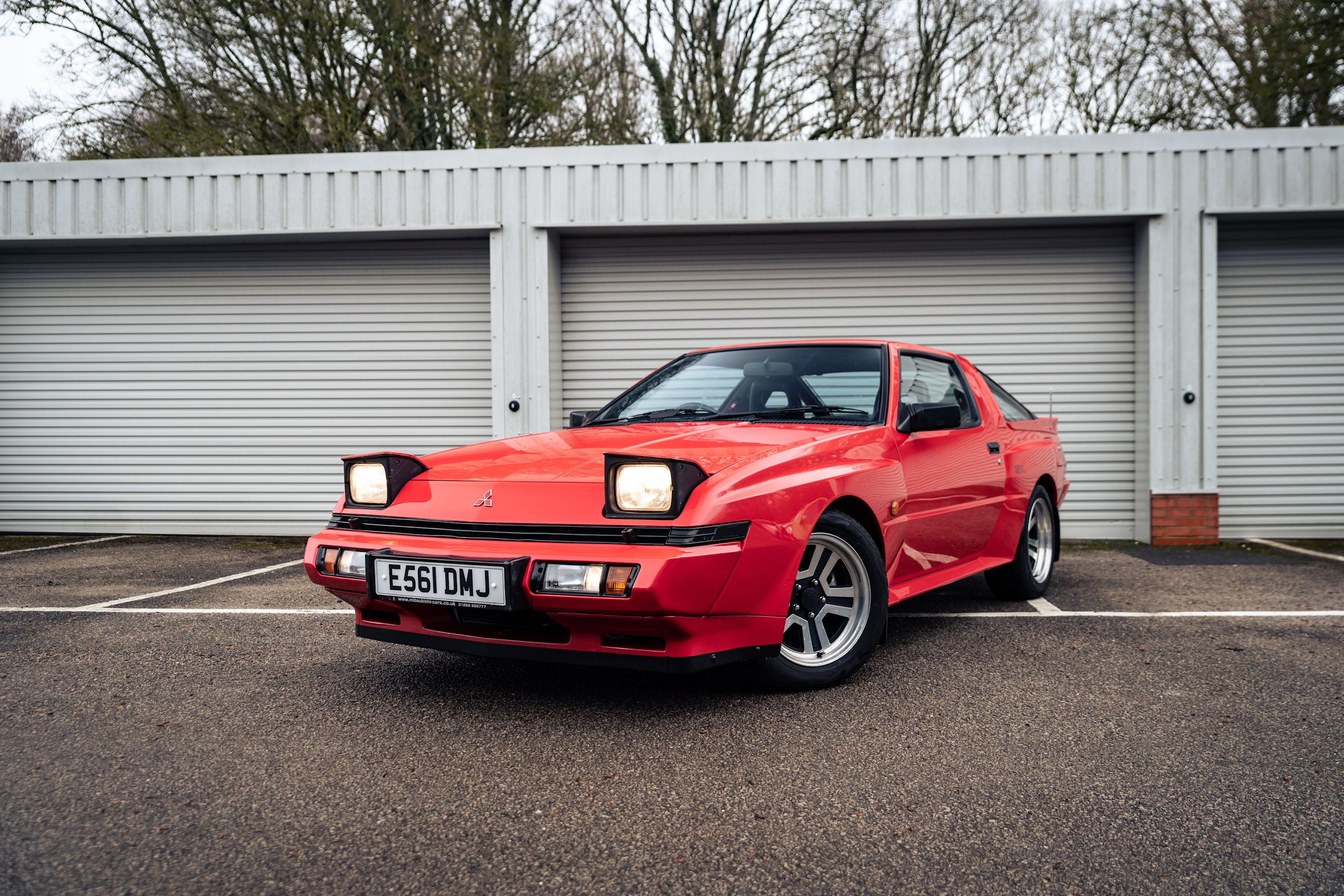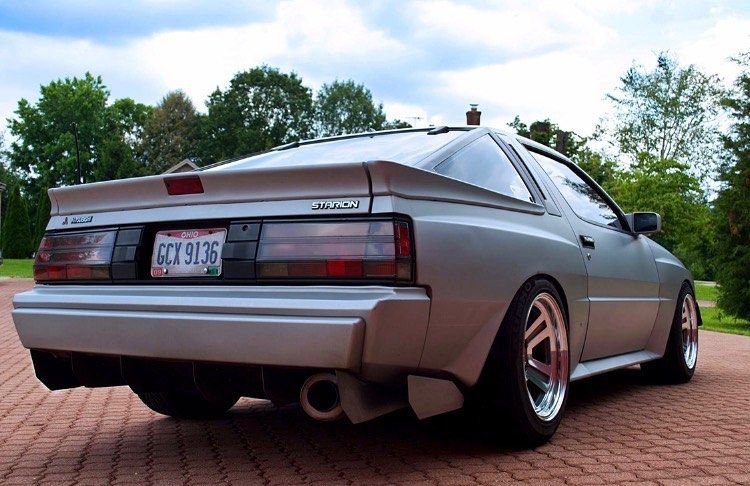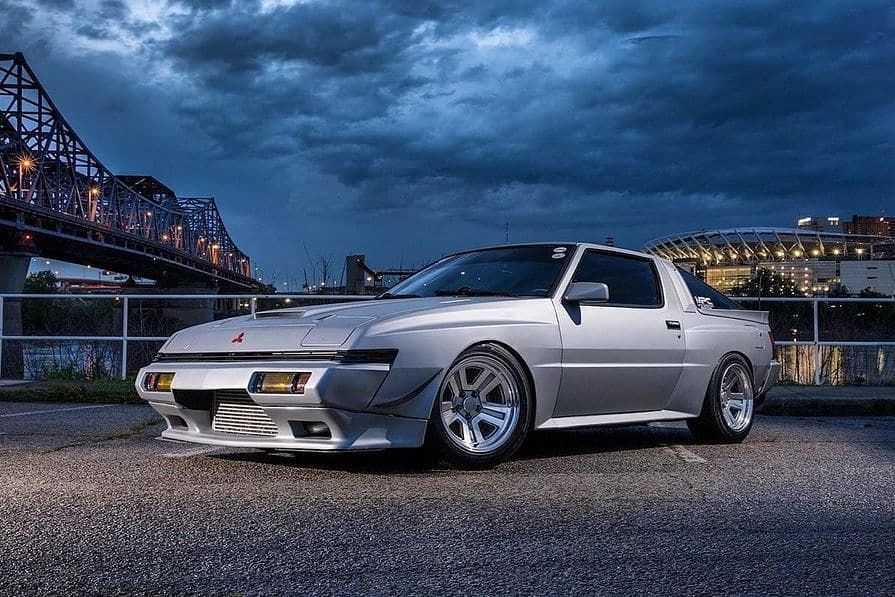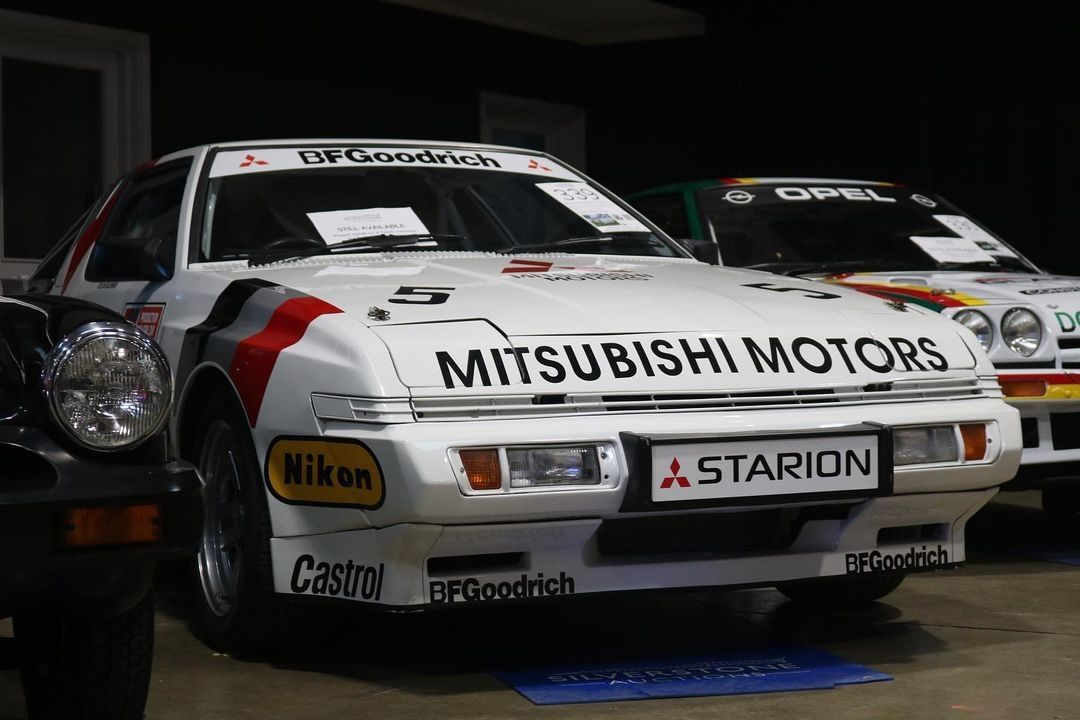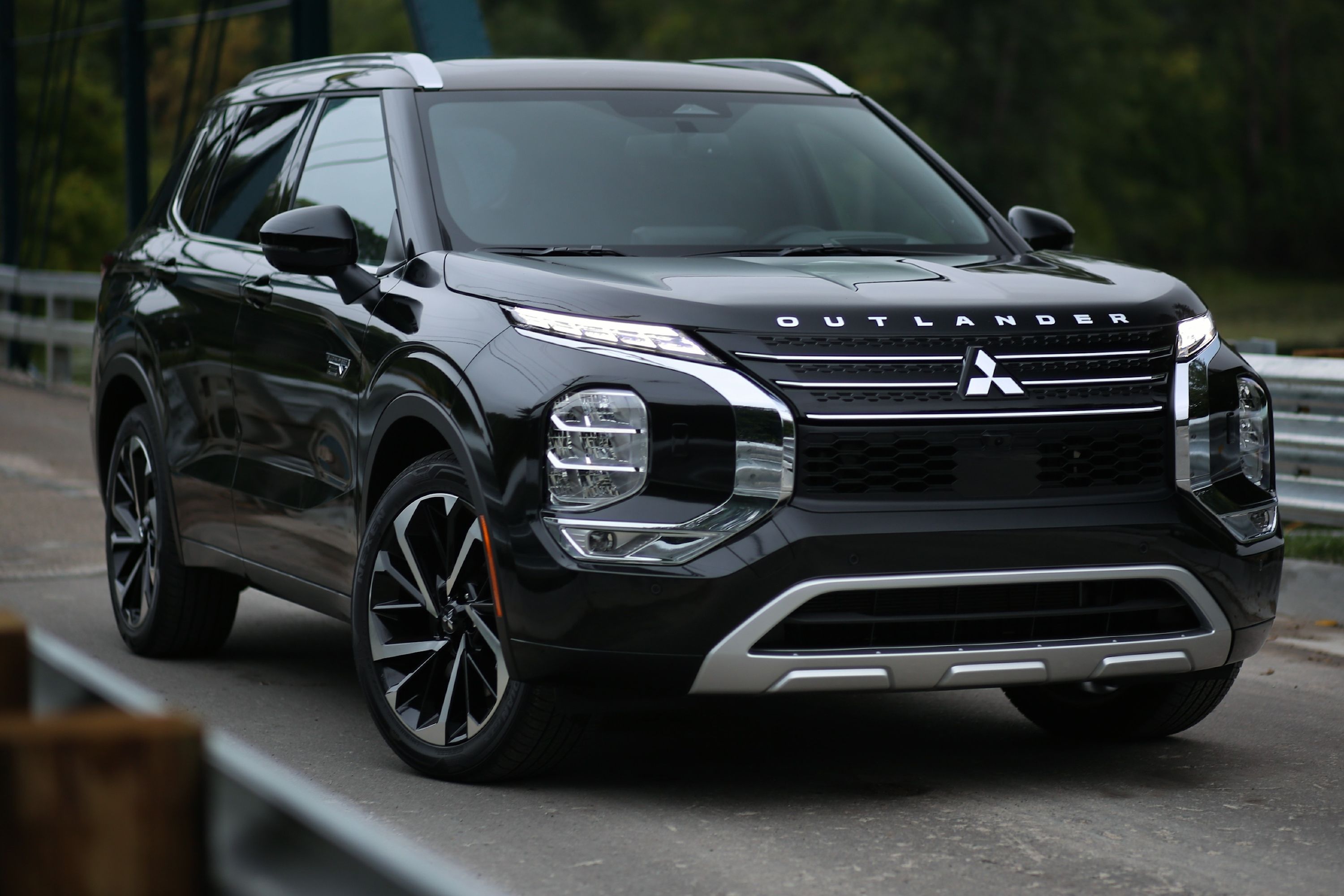
The Mitsubishi Starion was designed and built in Japan and sold in the US for a short period between 1983 and 1989. Decades have passed, but the Starion is still hot property in the used car market as a great JDM project to work on. Thanks to this, it has retained its value, and the average Mitsubishi Starion price is between $15,000 to $40,000.
In addition to wearing a three-diamond badge, it was also sold as the Chrysler Conquest, Dodge Conquest, and Plymouth Conquest. Mitsubishi only started pushing volume in the states in the 1990s, which is why the Mitsubishi Conquest never existed. If you want a Conquest car, your options are limited to American brands.
The car's name has become more famous than the car itself, so before we explore the Starion name, it's worth exploring the car that is the Starion first.
The first model was the 1982 Mitsubishi Starion, and it launched as a traditional two-door coupe (with Porsche 944 styling) to compete with the Honda Prelude, Mazda RX-7, Mk3 Toyota Supra, and Nissan's Z cars. There were clear winners in this fight. Otherwise, we'd have more Mitsubishis in the USA than just the Outlander Plug-In Hybrid, the only model worth mentioning. The Ford Mustang was also a target, and you'll want to remember that.
The Mitsubishi Starion turbo was sold in two engine capacities. Only the larger 2.6-liter models came to the USA, but not with the same trim badge as the Japanese Mitsubishi Starion ESI and ESI-R. Japan and other global markets received naturally aspirated 2.0-liter and turbocharged 2.0-liter models.
The Mitsubishi Starion ESI-R Widebody had a turbocharged and intercooled 2.6-liter four-pot producing 197 horsepower. This particular trim was badged TSI in the States, for example, Chrysler Conquest TSI.
While the Mitsubishi Starion engine was impressive, it had other notable attributes. The Starion's interior and specs were almost as remarkable. It even had tiny rear seats, which were only suitable for luggage.
What's In A Name
There are two competing theories as to how the Starion got its name. One is slightly racist, and we only include it for historical accuracy. Actually, it's more of an anecdote, but even the doyens of internet accuracy, Snopes, are yet to determine whether it's fact or fiction.
Name Grabbed From The Stars
According to Mitsubishi, the word Starion is a contraction of the Star of Arion. There is no star of Arion, though. It was rather a combination of the word "star" and a horse from Greek mythology called Arion. His most famous rider was Heracles, the god of gyms, not to be confused with Hercules, the god of strength and heroes.
This tracks with other Mitsubishi names, like Colt and Eclipse. Yup, the Eclipse, now a former shadow of itself, was named after a champion racehorse, not the celestial event.
The first use of the Starion name dates back to May 1982, when Mitsubishi in Japan printed the first brochures for the car. We tracked the original brochure and couldn't find a single reference to a horse, but there is a shot of the car in front of a starry night.
However, the rumor that has never quite been shaken is far more interesting...
A Name Born From The Awkward Language Barrier
Mitsubishi knew the Starion would go beyond Japan's borders, which meant communicating with other English-speaking nations. According to legend, the Japanese team struggled to pronounce "Stallion," which was apparently meant to be the car's name. Remember when we said Mitsubishi wanted to compete with the Mustang? Well, the word "Stallion" would be a logical choice and fit with the pony-related names of other Mitsubishi models.
Unfortunately, the world didn't have access to e-mail back then. Thanks to the heavy Japanese accent, the name went from Stallion to Starion during transcription. Once Mitsubishi's headquarters had to communicate globally, the car became known as the Starion. Japanese is a recognized language spoken by roughly 130 million people. It doesn't have an "L" equivalent, so it's pronounced as an "R."
We're genuinely not trying to be offensive. That's the story the way we heard it.
Arguments For And Against
According to Snopes, arguments exist for and against the myth of mispronouncing Stallion.
The argument against it is the relation to the mythical horse, which could just as well be an argument for it. Apparently, Mitsubishi tried to fix its mess, but in Japan, there was a TV ad for the Starion featuring a starry sky and a horse. As mentioned, Mitsubishi previously used equine-related names for its cars and space-related names for its engines. The Japanese giant produced a series of engines codenamed Aston, Sirius, and Saturn well before the Starion's introduction.
The main argument is that a large company couldn't make such a big mistake and not notice. While e-mails weren't a thing, faxes were, and is it possible for a car to go through an entire development phase without somebody seeing the problem?
Common sense says that the answer is no. There are far too many people involved. Still, it wouldn't be the first time Mitsubishi messed up a name. It had to rename the Pajero the Montero because Pajero is slang for an avid enthusiast of masturbation.
In fact, car companies mess up names all the time. The French pronounce MR2 as "em er deux," which, if said fast, as the French tend to do, sounds like "merde." That also happens to be a colorful French word for poop. The original Audi e-tron is also a bit of a flop in France because the word "etron" literally translates to a pile of MR2.
But the most famous snafu of all is Hyundai's Kona. Once again, it's a lost-in-translation situation between the East and the West. Hyundai wanted to hit the US market hard and named the Kona after the district in Hawaii.
Unfortunately, Kona is Portuguese slang for the worst word of them all. It rhymes with runt. In Portugal, it's called the Kauai, but that doesn't remedy the situation. The Portuguese Empire also had a penchant for colonizing countries, which means there are 25 million Portuguese-speaking individuals scattered across the globe, not including the 230 million native speakers.
All we're saying is that mistakes happen... so the Starion might actually have been the Stallion after all.

